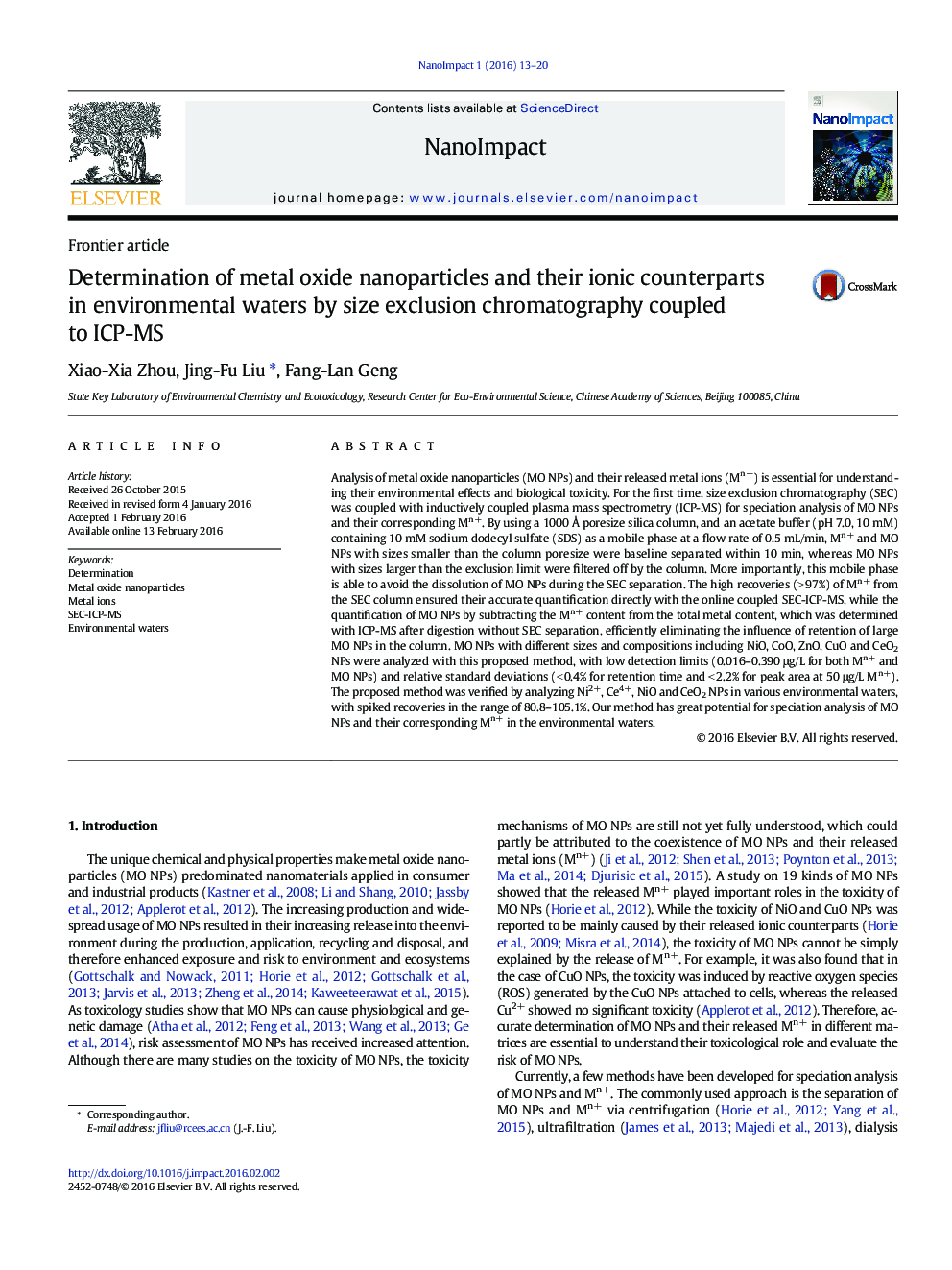| Article ID | Journal | Published Year | Pages | File Type |
|---|---|---|---|---|
| 2589389 | NanoImpact | 2016 | 8 Pages |
•SEC-ICP-MS was applied to speciation analysis of metal ions and metal oxide nanoparticles.•Baseline separation of metal ions and metal oxide nanoparticles in 10 min•Detection limits at ng/L levels for both metal ions and metal oxide nanoparticles•Applicable for various environmental waters
Analysis of metal oxide nanoparticles (MO NPs) and their released metal ions (Mn+) is essential for understanding their environmental effects and biological toxicity. For the first time, size exclusion chromatography (SEC) was coupled with inductively coupled plasma mass spectrometry (ICP-MS) for speciation analysis of MO NPs and their corresponding Mn+. By using a 1000 Å poresize silica column, and an acetate buffer (pH 7.0, 10 mM) containing 10 mM sodium dodecyl sulfate (SDS) as a mobile phase at a flow rate of 0.5 mL/min, Mn+ and MO NPs with sizes smaller than the column poresize were baseline separated within 10 min, whereas MO NPs with sizes larger than the exclusion limit were filtered off by the column. More importantly, this mobile phase is able to avoid the dissolution of MO NPs during the SEC separation. The high recoveries (> 97%) of Mn+ from the SEC column ensured their accurate quantification directly with the online coupled SEC-ICP-MS, while the quantification of MO NPs by subtracting the Mn+ content from the total metal content, which was determined with ICP-MS after digestion without SEC separation, efficiently eliminating the influence of retention of large MO NPs in the column. MO NPs with different sizes and compositions including NiO, CoO, ZnO, CuO and CeO2 NPs were analyzed with this proposed method, with low detection limits (0.016–0.390 μg/L for both Mn+ and MO NPs) and relative standard deviations (< 0.4% for retention time and < 2.2% for peak area at 50 μg/L Mn+). The proposed method was verified by analyzing Ni2+, Ce4+, NiO and CeO2 NPs in various environmental waters, with spiked recoveries in the range of 80.8–105.1%. Our method has great potential for speciation analysis of MO NPs and their corresponding Mn+ in the environmental waters.
Graphical abstractFigure optionsDownload full-size imageDownload as PowerPoint slide
